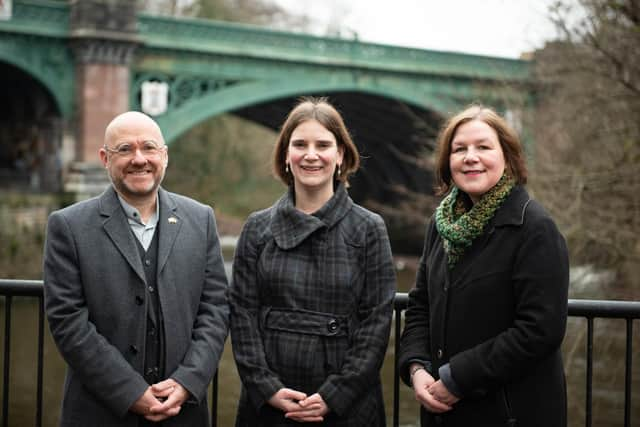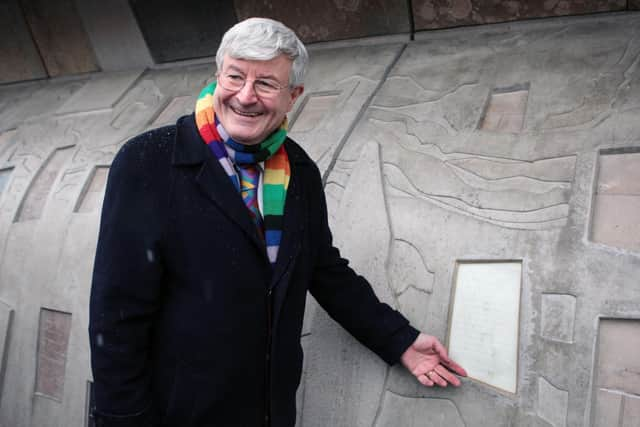Scottish Greens have lost radical edge in pursuit of power - Euan McColm
It may only have been victory in a council by-election but the party was perfectly entitled to make a song and dance about it.
As the Scottish Greens’ co-leader, Patrick Harvie MSP, was quick to point out in the early hours of Friday morning, the election of a new councillor in Glasgow was “ground-breaking”, marking, as it did, the party’s first-ever by-election win.
Advertisement
Hide AdAdvertisement
Hide AdLet’s first inject the politicians’ favourite ingredient – context – into the story. The Scottish Greens’ by-election win was in the Glasgow City Council ward of Hillhead. For those whose geography isn’t what it might be, Hillhead is in the heart of what newspaper writers have long felt compelled to describe as the city’s “leafy west end”.


That shorthand tells of a certain degree of privilege. Hillhead – home to Glasgow University and populated by students and wealthy older voters – is precisely the sort of area where the Greens are now expected to do well. The election of Seonad Hoy as the 11th Green councillor in Glasgow was both “ground-breaking” and entirely predictable. If the Greens can’t win a by-election in Hillhead then something’s gone very wrong for the party, indeed.
In fact, things have gone very right for what was once a party of limited relevance.
The first Scottish Green elected in Scotland was Robin Harper, returned as an MSP for the Lothians in 1999. Harper, a former Modern Studies teacher, rarely seen without his fedora and long, Dr Who (Tom Baker iteration) scarf, was a popular figure across parties. He was regarded as an honest broker who’d back either government or opposition positions depending on conviction rather than calculation.
But the thing about Harper was that, though he may have been the first elected Green politician in the United Kingdom, he wasn’t very political.


Things were to change in 2003, when a further six Green MSPs – including Patrick Harvie – were elected. Now, the Greens began organising campaigns, making a real effort to set the agenda.
Harvie swiftly settled on the issue of civil partnerships for same-sex couples. This was a smart move. Harvie was proposing an idea whose time had come and – though legislation on the the matter was ultimately handled at Westminster – he marked himself out as someone with a bit of political nous.
When Harper resigned as Scottish Greens leader in 2008, it was no surprise when Glasgow MSP Harvie succeeded him, becoming “male co-convenor” of the party, serving alongside former MSP Eleanor Scott.
Advertisement
Hide AdAdvertisement
Hide AdDespite the Greens’ performative act of gender equality, Harvie was the real leader. He was the one with the profile, the one the party put forward to talk to the media, and the one who led campaigns.
A party vote in favour of endorsing the Yes campaign in the 2014 independence campaign caused a split in the party. Former leader Harper spoke out – to little interest – in favour of the maintenance of the United Kingdom, while Harvie gained a new platform as a leading figure in the Yes campaign, forming a formidable double act with the SNP’s then deputy first minister, Nicola Sturgeon.
Throughout these years, the Greens maintained the illusion that theirs was a party of the radical left. If you felt Labour (or, indeed, the SNP, when it came to votes on Holyrood’s regional lists) were part of a tired old politics of self interest and exploitation, then vote Scottish Greens for a real socialist alternative.
Since the signing of the grandly-titled Bute House Agreement in August, 2021, the Scottish Greens have been in Government. A coalition deal – which both the SNP and Greens insist isn’t a coalition deal even though it’s quite clearly a coalition deal – has seen Harvie and the party’s current co-convenor, Lorna Slater, appointed ministers.
Both are bound – to a limited extent – by collective cabinet responsibility. Where there is a shared policy, Green ministers will stand with their SNP colleagues but they have an out in some policy areas, where their disagreement is (formally) tolerated.
A reasonable question is, I think, can the Scottish Greens be both a radical political force for change and part of a government which is currently focussing its attention on wooing back the middle class voters who’ve begun to desert the SNP?
I’m not at all sure they can.
Yes, you may point to Green actions at Holyrood to make the case for the party’s continued radicalism. Most notably, Scottish Green MSPs were driving forces behind the government’s botched plan to reform the Gender Recognition Act.
The introduction of self-ID for trans people was a red line issue for the Greens and when Scottish Secretary Alister Jack blocked Holyrood’s legislation on the grounds that it would impact on the UK-wide Equality Act, they led demands for a legal challenge.
Advertisement
Hide AdAdvertisement
Hide AdAnd when that legal challenge failed, the Greens (briefly) led calls for further action. And then, when it was clear the SNP was in no mind to continue this particular battle, the Greens fell into line, their gas at a peep.
Looking back at the self-ID saga, it’s clear those trans people who feel let down should focus their sense of betrayal at the Greens. It was the party’s MSP Maggie Chapman who, as deputy convenor of Holyrood’s Equalities, Human Rights and Civil Justice Committee, directed much of the fatally flawed consultation that preceded the vote on reform of the GRA. It was Chapman and her fellow Greens – along, to varying degrees, with members of all parties – who promised something they could not deliver.
If the Scottish Greens’ pragmatic silence on that once dominant issue isn’t enough to seal the case that their radicalism is a sham, I give you the party’s recent support for SNP Finance Secretary Shona Robison’s budget, which incudes a freeze on council tax.
This policy will mean further cuts to services for the most vulnerable and savings for the wealthiest.
The Scottish Green Party’s radicalism has been lost in its pursuit of power.
Comments
Want to join the conversation? Please or to comment on this article.